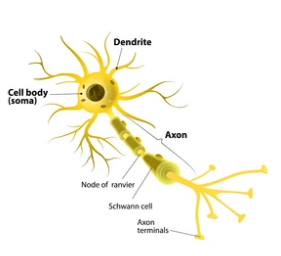Labeled:Cdraxc4dlxm= Neuron Diagram

The ‘Cdraxc4dlxm=’ neuron diagram presents an intricate view of neuronal anatomy, highlighting essential structures such as the cell body, dendrites, and axons. Understanding these components is vital for grasping the complexities of neuronal signaling and their implications for various neurological functions. As we explore the significance of each part in synaptic communication and impulse transmission, one must consider how this foundational knowledge could influence advancements in neurobiology and related fields. What implications does this understanding hold for future research and therapeutic approaches?
Overview of Neuron Anatomy
The anatomy of a neuron, the fundamental unit of the nervous system, is characterized by its distinct structural components, including the cell body, dendrites, and axon, which collectively facilitate the transmission of electrical impulses and communication within neural networks.
The axon structure is enhanced by the myelin sheath, while dendrite function is pivotal in synapse communication, enabling effective neural interactions.
Read more: Labeled:T0fa22k6krs= Skeleton Diagram
Key Components of the Diagram
Understanding the key components of a neuron diagram is vital for comprehending how these structures interact and function within the nervous system.
Central to this understanding are the axon terminals, which facilitate neurotransmitter release, and the dendritic spines, which serve as sites for synaptic connections.
These components illustrate the dynamic communication pathways essential for neuronal signaling and overall brain functionality.
Importance for Learning Neuroscience
Grasping the intricacies of neuron diagrams is essential for students and professionals alike, as it forms the foundational knowledge necessary for exploring complex neurobiological processes and mechanisms.
Understanding these diagrams facilitates insights into neuroplasticity effects, which are critical for cognitive enhancement.
This knowledge empowers individuals to harness the brain’s adaptive capabilities, fostering an environment conducive to learning and personal growth in the field of neuroscience.
Read more: Labelled:V-Xzjijklp4= a Map of the World
Conclusion
In the intricate tapestry of neuronal architecture, each component serves as a vital thread, weaving together the fabric of communication within the nervous system.
The cell body, dendrites, axon, and axon terminals symbolize the pathways of thought and impulse, illustrating the complexity of neural interactions.
Understanding this diagram not only illuminates the foundational elements of neurobiology but also invites a deeper inquiry into the enigmatic workings of the brain, a realm where signals transform into consciousness.




